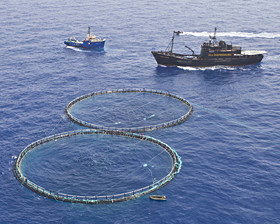

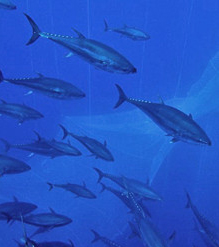 Steve Irwin Rammed by Bluefin Fishery Vessel;
Steve Irwin Rammed by Bluefin Fishery Vessel;
Sea Shepherd Crew Repel Violent Assault by Fishermen;
Libyan Navy in Pursuit of the Steve Irwin
Operation Blue Rage: Day Ten of the Mediterranean Patrol
Thursday, June 17th, 2010
Location: Off the Coast of Libya
Report by Captain Paul Watson, Steve Irwin
Sea Shepherd’s helicopter reconnaissance flight this morning found two fishing vessels. One was engaged in transferring bluefin tuna into one of the two nets being towed by the other vessel.
The bluefin fishery vessels were inside waters claimed by Libya and about 42 miles off the coast of North Africa.
At 1300 hours, the Steve Irwin came upon the Italian vessel Cesare Rustico towing two cages; one contained about 800 fish (the other was empty).
The Captain of the Cesare Rustico said when questioned that the tuna were caught on the morning of the 14th by the Libyan vessel Tagreft. When we replied that the number of tuna in the cage exceeded the quota for the Tagreft, the Captain said the cage also included tuna from seven other Libyan seiners. All the catches were caught on the 14th, the last legal day, according to the Captain. The other seven seiners named were the Khandheel 2, Hanibal, Ozul 2, Almadina, Morina, and Khaleej Eltahadi and one other that he had no name for. The problem with this explanation was that we had observed the Khandheel 2 on the 13th and 14th of June, and it was not fishing. In addition, weather conditions for those two days made fishing virtually impossible. The extremely difficult conditions, coupled with the position of the cages only 40 miles off the Libyan coast, when they should have been moving 25 miles a day, suggested to us that the fish were freshly caught within the last three days at the most.
Their statement that all the catches were caught on the 14th sounded much too convenient, so we asked to examine the fish for juveniles. We were refused. I then put the bow of the Steve Irwin onto the cage so we could look into the cage from the bow to examine it further.
Suddenly, the Maltese vessel Rosaria Tuna rammed the Steve Irwin on the aft port side and slid alongside the port rail, as a fisherman tried to violently gaff Sea Shepherd crewmembers with a long, sharp-hooked pole.
The Steve Irwin crew retaliated with 8 liters of rotten butter forcing the fishing vessel to retreat and to stand off.
At 1530 hours, the two fishing vessels circled their cages defensively and the Sea Shepherd ship Steve Irwin stood off to notify ICCAT (International Commission for the Conservation of Atlantic Tuna) of possible violations. They did not respond.
The Jean Charcot, the ICCAT inspection vessel will not venture south of 33 Degrees 40 Minutes North.
With two fishing vessels containing angry Italian crews, there were risks involved with getting into the water to assess the bluefin catch. But if the catch was illegal, Sea Shepherd divers knew they must cut the nets and free the bluefin tuna.
Sometimes it is necessary to do what needs to be done despite the risks. The risk of losing the bluefin tuna as a species is far more important than the risks to our own lives and freedom.
And so we decided to free the tuna.
At 1600 hours, a five-person dive crew entered one of two cages being towed by the Italian fishing vessel Cesare Rustico.
As the Steve Irwin held off the Cesare Rustico and the support ship Rosaria Tuna, the Sea Shepherd crew dove into the net to identify the size, age, and quantity of the bluefin tuna within. Once it was clearly established that the cage was overstocked and that a high percentage were juveniles, Sea Shepherd divers freed the 700-800 tuna.
It is our position that the bluefin tuna we freed from that cage held a large number of juveniles and that the fish were caught after the official closure of the season. It is also our position that the fish that we freed exceeded the quota.
A large percentage of the tuna were juveniles and from the position of the cages and the fact that the entire Mediterranean bluefin tuna fishery closed at midnight on June 14th, Sea Shepherd is convinced that this catch was caught after June 14 and therefore Sea Shepherd holds the position that this operation by these two vessels was illegal.*
The Sea Shepherd Conservation Society is not a protest organization. Sea Shepherd is an anti-poaching organization and these two seiners are poachers.
A Sea Shepherd cameraman filmed the release of the fish from the centre of the cage and swimmers confirmed that all 700-800 tuna inside the enclosure were freed.
“They shot out of that net like racehorses,” said Canadian cameraman Simon Ager.
After freeing the bluefin tuna, the Steve Irwin headed north and out of the waters claimed by Libya. The Maltese media reported that Libya had dispatched warships to pursue the Steve Irwin.
There are claims in the Maltese press that a bluefin tuna fisherman was injured by our actions. No one on the Steve Irwin, in the helicopter, or in the Delta saw any incident where a fisherman was injured. We saw one man dive into the water from the side of the cage. Then, we saw him get up and give us the rude Italian arm signal. Another fisherman slashed at the crew with a hook on the end of a long pole, and one of the vessels rammed us in the port stern area.
* Notes
Given the very bad weather conditions in the zone north of Tripoli until the closure of the legal fishing season on June 14th, it is impossible that this catch was taken during the legal season. The tuna were caught post-closure, during a period of very calm weather that has predominated over the area since the 15th.
Legal Season:
Wind speed 12th June: 20-35 knots / Seas 1-2 meters
Wind speed 13th June: 20-25 knots / Seas 1-2 meters
Wind speed 14th June: 10-20 knots / Seas 1-2 meters
Post closure:
Wind speed 15th June: 10-15 knots / Seas 1 meter
Wind speed 16th June: 15 knots / Seas <1 meter
Wind speed 17th June: 10 knots / Seas <1 meter
The Steve Irwin passed the Khandeel 2 (one of the vessels on the BCD document read over the VHF radio) on the 13th at 1230 at 33*36 / 13*55, less than 20 miles from where we encountered the cages towed by Cesare Rustico and Rosario Tuna on the 17th, and it was not fishing. The weather was rough.
Given the location of the capture, and the location of the tow vessel, it is impossible the catch was made 3 days ago. Heading towards Malta with an average 25 miles per day, the vessel and cage would have been much further north (the vessel was in very calm weather sitting still waiting a second vessel).
Visit our Operation Blue Rage Campaign site – http://www.seashepherd.org/blue-rage/
 7th July 2010
7th July 2010
 Society has openly given response to the High-Speed Train (HST) in the latter times. We know, and so do they, that we are many people against HST. In Hendaya, there were more than 15.000 people in a recent demonstration against this project. Many referendums were placed and the response against the project was widely supported. There have been also many public appearances and actions all over. But power doesn’t seem to listen and the situation is getting worse day by day. Civil disobedience and direct action are the only means we have left to stop the HSP project, and that’s why four activists took the decision to take part in this action, putting their lives in danger. It’s been three days now since 4 activists decided to go inside a tunnel in the mines in Itsasondo (Gipuzkoa, in the Basque Country). They are actually blocked and chained inside the tunnel with no way to go out by themselves. Even if their situation has gone public, none of the public organizations involved have taken any measures or organized any rescue team. This has put their lives in serious danger. Besides, the explosions and the normal operations in the mines have not been stopped, making this danger even worse. As a result, we are facing a really dangerous scenario, not only because the explosions have not been stopped, but also because public powers are acting with absolute neglect, putting the lives of the activists in real serious risk. How can it be possible that in these times when life is publicly extolled, public powers show so little respect for the lives of those citizens? How can all those who talk so much about “the people’s choice” go on with their project to build the High-Speed Train, after many people and organizations have widely showed their refusal to this infrastucture? For all these reasons we encourage people to join us in the demonstration that will be held tomorrow, 4th of July in Ordizia (Gipuzkoa-Basque Country), 5 o’clock in the afternoon, and also to show their support to the activists in the mine by coming to the support camp in Itsasondo (Gipuzkoa).
Society has openly given response to the High-Speed Train (HST) in the latter times. We know, and so do they, that we are many people against HST. In Hendaya, there were more than 15.000 people in a recent demonstration against this project. Many referendums were placed and the response against the project was widely supported. There have been also many public appearances and actions all over. But power doesn’t seem to listen and the situation is getting worse day by day. Civil disobedience and direct action are the only means we have left to stop the HSP project, and that’s why four activists took the decision to take part in this action, putting their lives in danger. It’s been three days now since 4 activists decided to go inside a tunnel in the mines in Itsasondo (Gipuzkoa, in the Basque Country). They are actually blocked and chained inside the tunnel with no way to go out by themselves. Even if their situation has gone public, none of the public organizations involved have taken any measures or organized any rescue team. This has put their lives in serious danger. Besides, the explosions and the normal operations in the mines have not been stopped, making this danger even worse. As a result, we are facing a really dangerous scenario, not only because the explosions have not been stopped, but also because public powers are acting with absolute neglect, putting the lives of the activists in real serious risk. How can it be possible that in these times when life is publicly extolled, public powers show so little respect for the lives of those citizens? How can all those who talk so much about “the people’s choice” go on with their project to build the High-Speed Train, after many people and organizations have widely showed their refusal to this infrastucture? For all these reasons we encourage people to join us in the demonstration that will be held tomorrow, 4th of July in Ordizia (Gipuzkoa-Basque Country), 5 o’clock in the afternoon, and also to show their support to the activists in the mine by coming to the support camp in Itsasondo (Gipuzkoa).  On 6th July, despite the TAV trucks having security escorts, we sat in front of the vehicles. The truck driver was very aggressive, grabbing us by the throat and threatening us. He drove at us, so we got out of the way before being hit. He tried to attack with a club, but the security guards restrained him! We denounce this aggression and will continue to resist from the Leginetxe squatted workers’ cottages.
On 6th July, despite the TAV trucks having security escorts, we sat in front of the vehicles. The truck driver was very aggressive, grabbing us by the throat and threatening us. He drove at us, so we got out of the way before being hit. He tried to attack with a club, but the security guards restrained him! We denounce this aggression and will continue to resist from the Leginetxe squatted workers’ cottages. 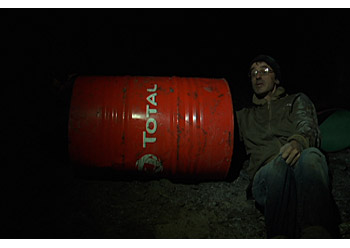 Itsasondo – FROM MINES AGAINST HIGH-SPEED TRAIN
Itsasondo – FROM MINES AGAINST HIGH-SPEED TRAIN 1st July 2010
1st July 2010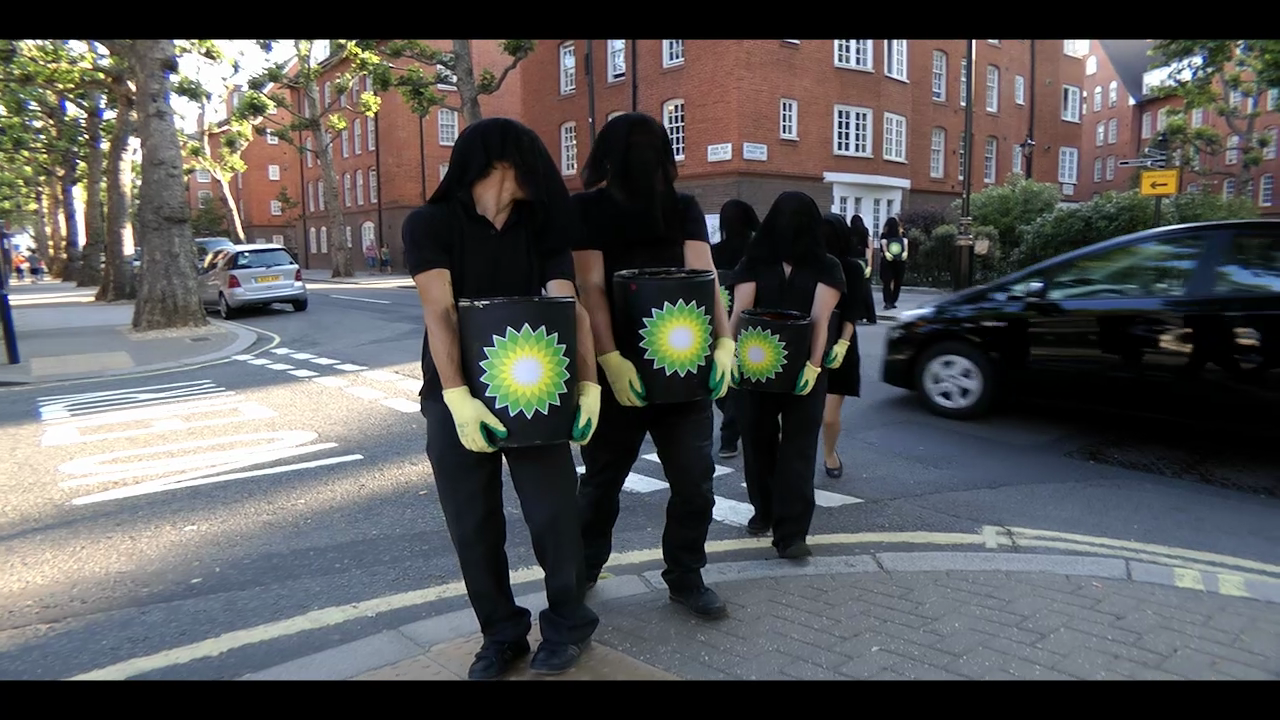
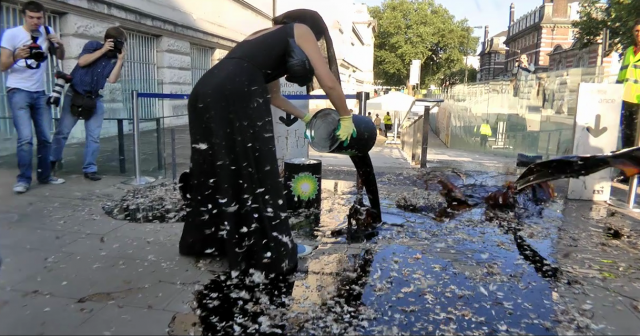 On the evening of the 28th of June at approx 7:15pm, Liberate Tate In protest over BP’s sponsorship of the arts performed a “Solemn” oil like spill at the Tate’s Summer party.
On the evening of the 28th of June at approx 7:15pm, Liberate Tate In protest over BP’s sponsorship of the arts performed a “Solemn” oil like spill at the Tate’s Summer party. 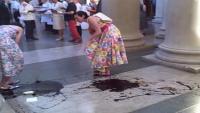

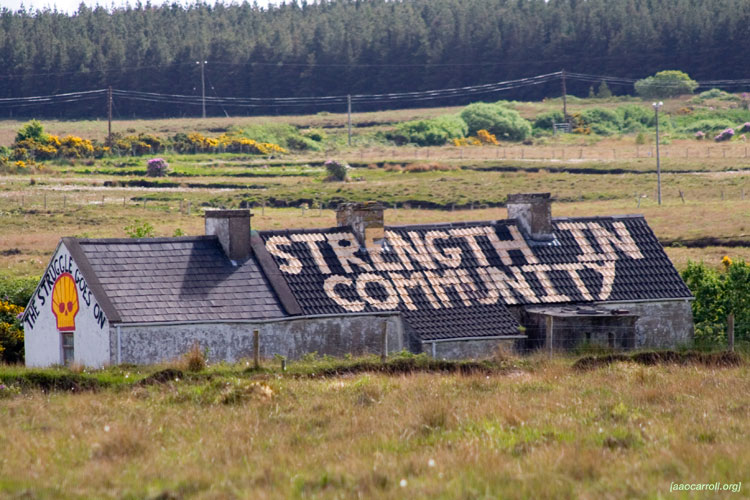 June 25, 2010
June 25, 2010
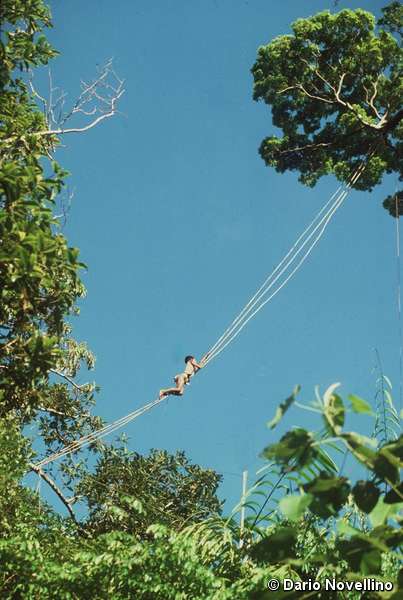 24 June 2010
24 June 2010
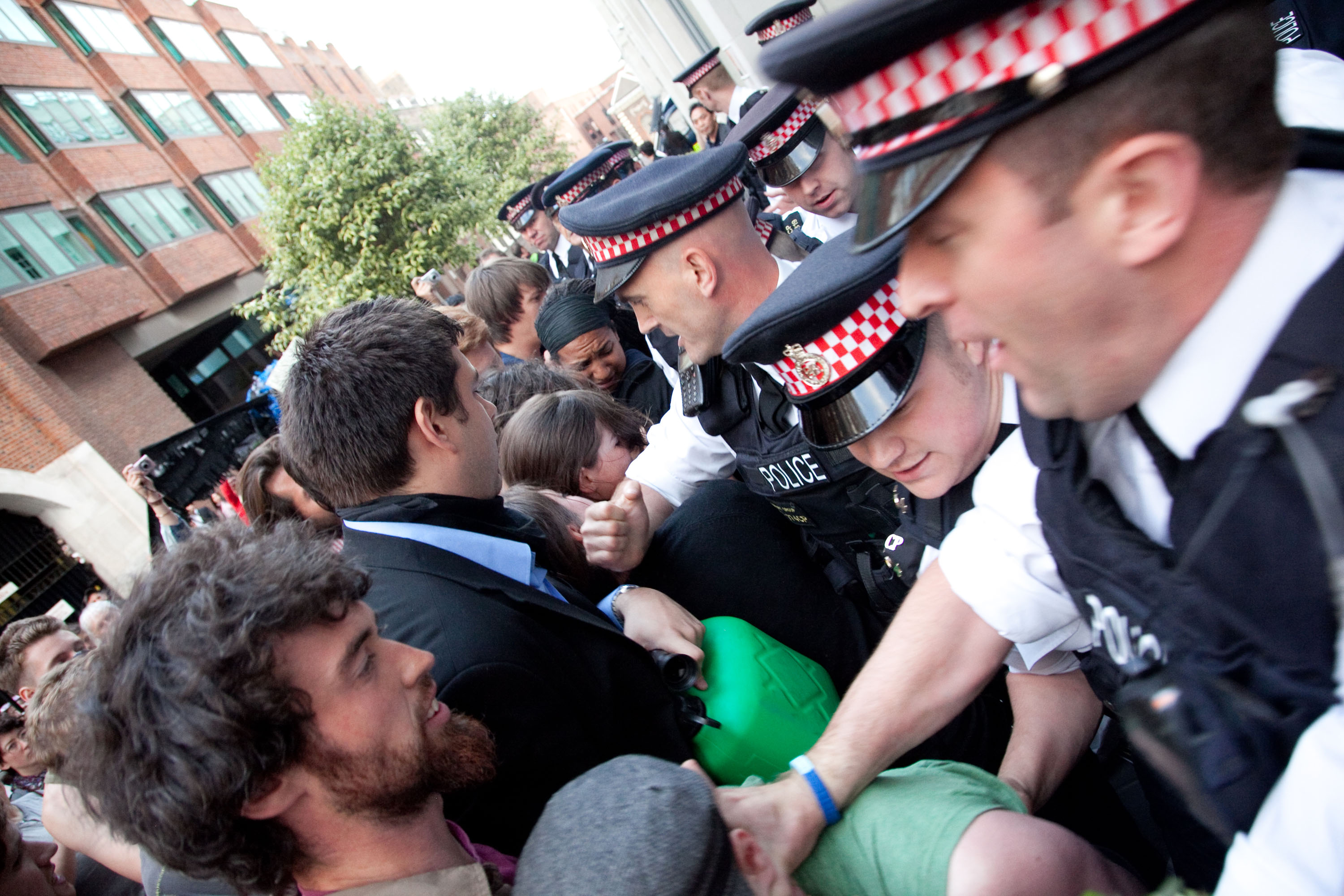 As oil executives gathered at a London hotel for their annual strategising conference on Monday 21st June, up to 200 climate activists crossed the river from BP-sponsored Tate Modern to converge on the front entrance with a samba band and a giant paper-mache oil-covered seabird.
As oil executives gathered at a London hotel for their annual strategising conference on Monday 21st June, up to 200 climate activists crossed the river from BP-sponsored Tate Modern to converge on the front entrance with a samba band and a giant paper-mache oil-covered seabird.

 Steve Irwin Rammed by Bluefin Fishery Vessel;
Steve Irwin Rammed by Bluefin Fishery Vessel;